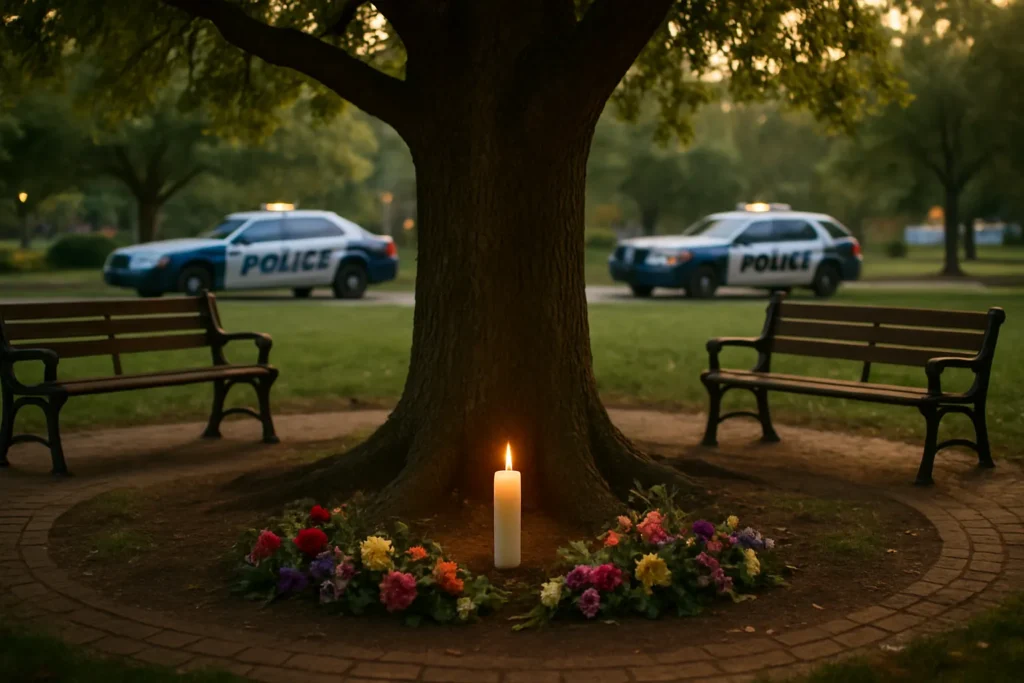The Loss of a Community Pillar
East Oakland awoke to shock and grief after Wednesday’s tragic turn on its city streets. Dr. Marvin Boomer, revered by students and colleagues at Castlemont High School, was killed while walking with his wife when a young driver fleeing law enforcement brought a police pursuit to their doorstep. The driver, 18-year-old Eric Scott Hernandez-Garcia, had briefly been chased by the California Highway Patrol (CHP) before officers called off the ground pursuit—a decision made in the interest of public safety, but one that nonetheless culminated in irreversible loss.
Boomer’s absence shattered the final week of the school year, turning planned celebrations into moments of collective mourning. A “beloved educator and mentor”, he was a familiar face in the halls, not just as a math teacher, but as the head of Castlemont’s Pathways program, a lifeline for many students seeking college and career opportunities out of adversity. Testimonies from parents and faculty remember him as the rare kind of mentor who, as one parent put it, “saw every child’s dream as something worth fighting for.”
The ripple effect of his death extended beyond Castlemont’s campus. Neighbors, students, and families left flowers and notes beside the scene, while social media flooded with tributes from graduates whose first acceptance letters, or even basic confidence in math, they owed to Dr. Boomer. Darlene Rodriguez, a teacher and union organizer in the district, described the loss as “not just of a teacher, but of hope itself for so many kids. Not every school has a Marvin Boomer.”
How California’s Pursuit Policies Failed Oakland
A closer look reveals the bitter tangle of public safety and policy failure at the heart of this tragedy. The police pursuit policy in California has undergone waves of change, oscillating between restriction and leniency in response to shifting public pressure. In March 2024, San Francisco voters approved a ballot initiative granting police greater latitude to chase suspects—a direct reversal of reforms the city implemented only a few years earlier after a spate of high-profile, pursuit-related deaths.
Despite growing evidence of the dangers, political momentum recently favored law enforcement. California Gov. Gavin Newsom and much of Oakland’s law enforcement establishment have supported less restrictive rules, arguing they are needed to combat rising property crime and brazen vehicle thefts—offenses that, ironically, rarely justify high-speed chases under the safest policing standards.
But what do the numbers say? According to the U.S. Department of Justice, police pursuits kill over 300 people a year nationwide, nearly a third of whom are innocent bystanders. California’s own history is tragically consistent: local investigative reporting by the Bay Area News Group revealed that between 2017 and 2022, police chases in the state led to at least 150 deaths. Policy experts like Samuel Sinyangwe, founder of Police Scorecard, warn that “loosening pursuit rules often results in more chases, more crashes, and inevitably, more funerals.”
The death of Dr. Boomer forces the question few want to face: does the promise of more suspects caught outweigh the proven reality of civilian risk, especially when police disengage only to have suspects continue fleeing?
The Human Toll and the Need for True Accountability
“We can talk about numbers, but every stat is a family eviscerated,” says Tanya Carter, a cousin of Boomer’s wife. She likens the shock gripping the Castlemont community to a wound that doesn’t heal just because headlines fade. The consequences of these fleeting, high-risk chases extend far beyond the moment of impact. Dr. Boomer’s wife, now recovering from her injuries, was reportedly seen on nearby security footage immediately after the incident, desperately seeking help in a landscape suddenly emptied of safety.
“We shouldn’t have to lose our best and brightest just to keep up the appearance of toughness on crime. If police pursuits are necessary, they must truly be rare and guided by the most rigorous standards of public safety. Anything less, and we betray the values of the communities we claim to serve.”
In the aftermath, advocates have renewed calls not just for data-driven oversight of pursuits, but for robust community involvement in setting police protocols. “When you leave policy to politicians swayed by the latest scare headline or public tantrum,” says New York policing authority Dr. Samuel Walker, “the people who pay are those who already live closest to the edge—Black, Latino, immigrant communities like East Oakland.”
The suspect, Hernandez-Garcia, will face charges, but the system-fueled risk remains. His case is not an isolated aberration, but part of a broader pattern where reactive, tough-on-crime rhetoric trumps research and lived experience. Progressive leaders insist it doesn’t have to be this way. Carefully regulated pursuits, better investments in non-carceral responses to crime, and—crucially—the courage to say, “not every chase is worth the price paid,” represent a new moral calculus for the state.
As Castlemont’s graduating seniors gather to say goodbye, they do so under the shadow of a loss both personal and political. The question—a haunting one—lingers in the halls: What kind of justice will honor the teacher whose life was dedicated to giving others a future, only to have his own so cruelly taken?

